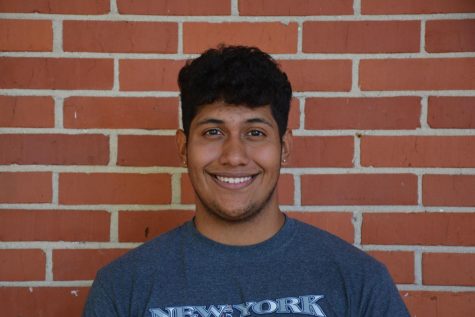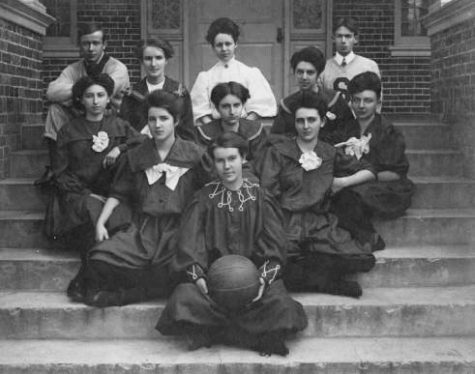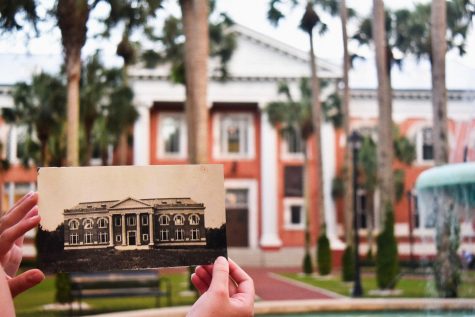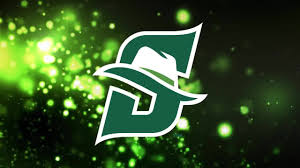Starting from Scratch: A Hatter Football Story
The Stetson Board of Trustees voted to terminate the Hatters football program on January 22, 1957. After a 1956 season in which no game, except the Homecoming game, sold more than 60 seats, it wasn’t exactly a surprising decision.
But it ended a 55-year old team that had been formed within two decades of the University’s founding. Fifty-five years later, the team rose from the proverbial ashes to bring football back to Stetson.
Instrumental to the decision to revive the team were President Wendy Libby, Ph.D and Director of Athletics Jeff Altier. President Libby was not available for comment. The primary motivations for starting the team back up were rooted in aspirations for greater enrollment.
“In many respects it was a hugely brave decision,” said Head Coach Roger Hughes said. “In some respects, it was a no-brainer decision because she wanted to increase enrollment and grow the institution a little bit into prosperity.”
In the summer of 2011, faced with relatively small levels of enrollment, President Libby saw untapped potential in the defunct Division 1 football team. Largely, the effort to increase enrollment was successful. “Our application pool went from 2,500 to over 12,000 when we added football,” Coach Hughes said.
Within the broader strategy to increase enrollment, there was a second, more defined purpose to restarting Stetson Football: increasing male enrollment.
The ratio between male and female students was lopsided during the early 2010s; to help even the balance, President Libby, Director Altier, and the board of directors greenlighted the football team as a method to make the school more desirable to prospective male students.
After the decision was made to bring back Hatter Football, the funds had to be acquired to give the team the resources they needed to compete.
“The start-up costs were 11.5 million,” said, “and that includes everything.” This money paid for the athletic training center, among other things.
“We promised that we would raise every penny of that; it would not cost the university anything in terms of startup costs.”
The team has paid for most of the startup costs by now; the remaining amount is covered by an estate gift that has not yet been liquidated but will be given to the university soon. This money has been paid for by athlete tuition revenue and ticket revenue, among other financing methods.
“The number of full-time faculty grew significantly, the University’s merit scholarship went from 50 million a year to 70 million a year in the same time frame,” Altier said, although he noted that these were correlated and not necessarily caused by the team’s start-up.

“Alumni engagement for homecoming went from 836 alumni returning for homecoming in 2013 to 1200 returning in 2017.”
In total, the team covered most of the goals that it made for itself when it restarted.
“We hit [expectations] in many areas, but not in every area,” Altier said. “Some of them may have just been faulty assumptions when we walked into it. But from a revenue standpoint, we far exceeded it; from an enrollment standpoint, we far exceeded our objectives.”
Also involved in the financial side of the project were City Manager Michael Pleus and Mayor Robert Apgar. The two convinced the city that Stetson could be treated as a partner in that capacity.
With the relative ubiquity of football teams at colleges today, not to mention the history of football on Stetson’s campus, it’s easy to wonder why the team went so long without one.
This has more to do with the larger vision of the university. In 1957, the team had low attendance and was consistently losing money. It is also important to note that during that time, the team was a scholarship team, whereas now it is a non-scholarship team. This means that students do not receive a scholarship to play football for Stetson. Beyond that, however, the university was also operating under a different financial model than its current one. For several decades, the school kept its enrollment numbers low and grew at a relatively low rate.
“I went back to the president at the time, Doug Lee, and shared with him what my thoughts were about football and how I thought it could enhance the university and at the time there wasn’t the desire or the capacity to grow.”
And that’s essentially what the decision to bring football back was about: growth and expansion. In the 90s and 2000s, Stetson was not looking to expand. They favored the small private-school vibe and supported a low-cost, low-enrollment model.
“Our classrooms were fuller and our dorms were fuller, and we didn’t have as many dorms,” Altier explained. “So [President Lee] looked at it and said it doesn’t make sense for us. Because, whatever way you put it, a student athlete, from a business model only, costs more than a normal student costs because there’s other investments in staffing and trainers and coaching and all that. So from his perspective, … it did not make financial sense to add a program that would actually take away normal students and reduce the revenue generation from those students.”
It’s fair to question whether those concerns may still be relevant. Does the existence of a football team negatively affect Stetson’s small-school atmosphere? Is the financial strain that a large program like football brings to a school offset by increases in revenue and marketability? The decision to bring back football has been controversial, to say the least. Some members of the university left their positions because of the reinstatement of football and the perceived change in school vision.
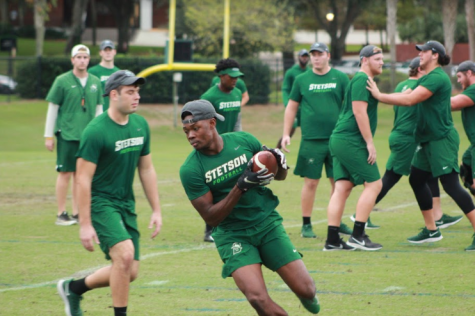
The 2019 Hatters football team conducts a drill during a season practice.
Regardless, when President Libby joined Stetson, she brought with her an entirely new vision. Emphasizing growth and expansion, President Libby almost immediately commissioned the return of Hatter football. Along with football, beach volleyball, and women’s lacrosse were also started at this time.
Fresh off a 55-year hiatus, Stetson football is back. And after starting from scratch, the Hatters are beginning to put the pieces of a successful football team in place and compete at a higher level.
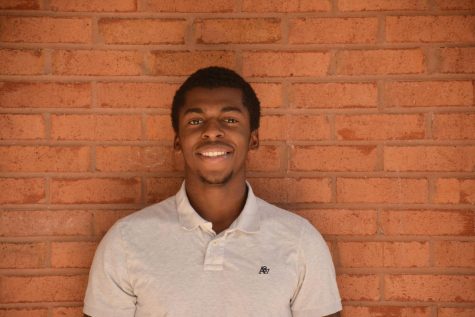
Ihsaan Fanusie is the sports editor for the Reporter, as well as a writer for the news and sports sections. He enjoys reading and writing and can be found...



